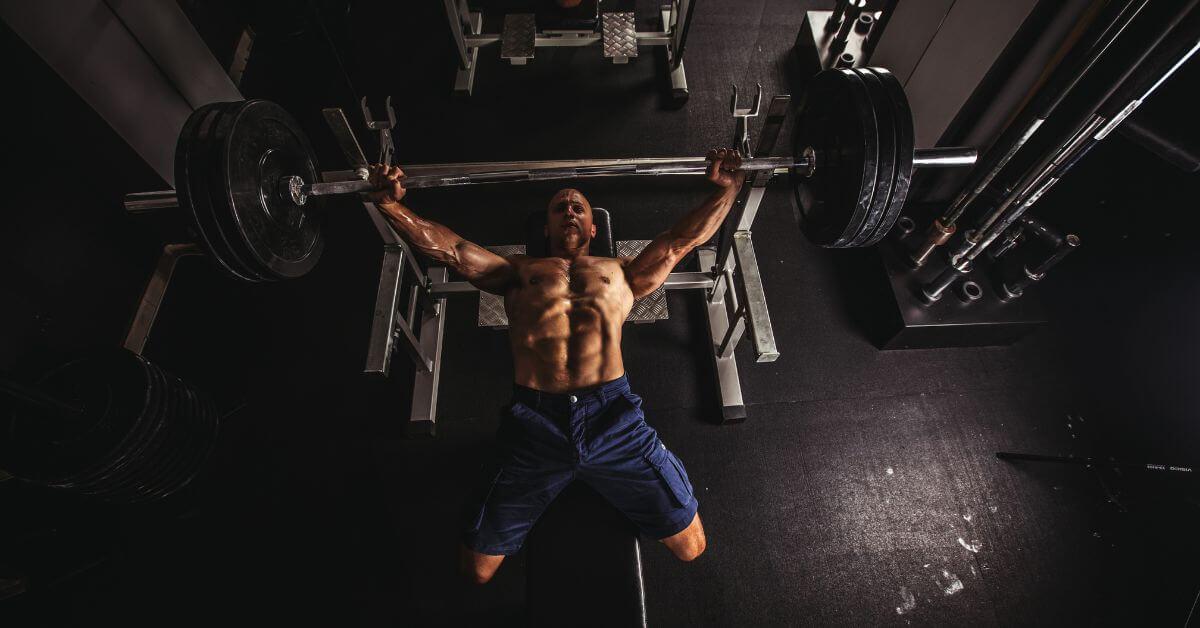This is a comparison between functional strength training vs traditional strength training.
Table of Contents
ToggleFunctional strength training and traditional strength training are two methods of strength training. While all approaches offer benefits and drawbacks, it’s critical to recognize the differences in order to choose the strategy that will best serve your objectives.
Functional training emphasizes full-body movements that simulate everyday tasks including pushing, carrying, and lifting. On the other hand, traditional strength training emphasizes using resistance to increase muscle growth and muscle strength.
Your goals will ultimately determine whether you choose functional strength training or traditional strength training. You may attain your targeted outcomes and enhance your general health and fitness with a well-structured strength training program.
Start Building Your Dream Body Today
Ready to elevate your fitness game without falling into the trap of dull, repetitive routines that just don’t deliver? Imagine sculpting your ideal physique and boosting your health, all while still enjoying life’s pleasures, like those irresistible weekend getaways and your aunt’s legendary cheesecake. With our online fitness and nutrition coaching service, you don’t have to compromise. Dive into a personalized fitness journey that blends perfectly with your lifestyle, not against it. Book your completely free discovery consultation today, and take the first step towards a transformation that doesn’t require giving up the joys of life.

“I was skeptical about online fitness coaching, but Functional Body Savage completely changed my perspective. Vanja and Radomir’s personalized approach and attention to detail have helped me achieve goals I never thought possible. I’m stronger, more confident, and grateful for their guidance.”
Emily Thompson, San Francisco, CA
Learn More About Our Online Coaching ServiceQuick Summary
- Functional strength training focuses on functional strength training movements that mimic real-life activities.
- Traditional strength training focuses on building muscle size and muscle strength through isolated movements.
- Focus, equipment, exercises, environment, and results all differ from one another.
- Achieving fitness goals requires finding a program that meets each person’s fitness preferences and ambitions.
- Improved physical function, a lower chance of injury, and bigger, stronger muscles are just a few advantages of combining functional and traditional strength training.
What Is Functional Strength Training?
Functional strength training is strength training that focuses on exercises that mimic everyday tasks and motions. In order to enhance functional ability, balance, stability, and coordination, it places a strong emphasis on the utilization of exercises that work many muscle groups simultaneously.
These exercises, which are intended to assist people carry out daily duties with ease, are frequently performed using body weight or with minimum equipment.
Squats, lunges, push-ups, and pull-ups are a few instances of functional training exercises that may be used to build functional strength. By teaching the body to perform as a unit, these exercises increase general functioning and lower the chance of injury.
People who desire to increase their general fitness, strength, flexibility, and capacity to carry out daily activities like lifting heavy things, climbing stairs, and reaching high shelves frequently employ functional strength training [1].
What Is Traditional Strength Training?
Traditional strength training is the proven way of growing muscle that has been around for decades. Resistance bands and weightlifting tools like barbells, dumbbells, and weight machines are used repeatedly in isolated motions to increase muscle development, strength, power, and endurance.
This type of training involves carrying out a specific number of repetitions of each exercise, which is frequently done in a gym setting.
Bench presses, leg presses, triceps extensions, and bicep curls are a few traditional training exercises examples.
Bodybuilders, weightlifters, and athletes aiming to gain muscle mass and improve their strength frequently embrace this style of training. Increasing muscle mass can result in a more toned and defined body, which can be helpful for people trying to improve their appearance [2].
Functional vs Traditional Strength Training: The Similarities
Functional Strength Training and Traditional Strength Training share several similarities:
- Require consistency: Consistency is essential for either sort of strength training to produce benefits. To increase your physical fitness and accomplish your goals, you must commit to progressive overload and hold yourself to regular training sessions.
- Improve physical fitness: Both traditional and functional strength training are intended to increase physical fitness overall. Whether you want to gain muscle, boost your strength, or just become in better condition, both ways may help you get there.
- Can be customized: Whether you’re a novice or an experienced athlete, both functional and conventional strength training may be tailored to your specific requirements and goals. Your fitness teacher can assist you in developing a program that is appropriate for you and achieving your fitness goals.
Both functional and traditional strength training have plenty to offer whether you want to enhance your physical fitness, gain muscle, or just get in better condition.
Functional vs Traditional Strength Training: The Differences
Despite the similarities between the two techniques, there are also some significant differences that separate them:
- Focus: Focus is the primary distinction between functional and traditional strength training. Traditional strength training focuses on increasing muscle growth and strength through isolated movements, whereas functional training emphasizes functional movements that closely resemble real-life tasks.
- Main goal: Functional strength training aims to promote mobility, general fitness, and injury prevention whereas traditional strength training aims to build bigger, stronger muscles and enhance sports performance.
- Training setting: While traditional strength training is frequently done in a gym environment using weights, machines, or resistance bands, functional strength training may frequently be done in a number of locations, including the gym, outdoors, or even at home.
- Exercise choice: Traditional strength training exercises frequently include isolated motions utilizing weights, machines, or resistance bands, but functional training activities can involve many muscle groups and need a great deal of balance and coordination.
Understanding these variations will help you choose the type of strength training that will meet your requirements and goals the best.
“Obviously, the big three lifts build a lot of strength and they’re great. They do NOT translate to every possible type of performance. If it did, you wouldn’t even need all three moves, you could just use one move!” – Adam Sinicki, AKA The Bioneer, author of the Functional Fitness and Beyond
Functional Strength Training Benefits
Functional strength training has several advantages for athletes of all levels, including:
- Increased muscular strength and power: Muscle contraction and relaxation forces and speeds can be improved through functional strength training. This enhances overall power, speed, and agility [3].
- Better balance and coordination: Functional training improves the body’s capacity for fluid, coordinated movement by requiring cooperation between various muscles and joints [4].
- Lowered risk of injury: Strengthening the muscles and joints involved in physical exercise lowers the chance of injury [5].
- Improved endurance: Functional strength training is advantageous for athletes engaged in tasks that call for prolonged periods of high exertion since it helps to lengthen the time it takes for muscles to get fatigued [6],
- Better performance: Strength, power, endurance, balance, and coordination are all improved through functional training. This allows athletes of all levels to perform at their peak [7].
Any training regimen must include it since it helps athletes get ready for the physical demands of their chosen sport or activity.
Traditional Strength Training Benefits
Traditional strength training is a well-liked and efficient kind of strength training since it offers a number of advantages:
- Increased muscle size and strength: The apparent advantages of traditional strength training are bigger, stronger muscles. By repeatedly putting these a specific muscle group through weightlifting and resistance exercises, you may strengthen and add muscle with this sort of training [8].
- Better athletic performance: Traditional strength training can also enhance general athletic performance. You may perform better in sports and other physical activities by adding muscle and boosting your strength [9].
- Enhanced bone density: Traditional strength training can increase bone density, lowering the risk of osteoporosis and other bone-related diseases [10].
- Lowered risk of injury: Traditional strength training can also aid in lowering the risk of injury by enhancing strength and muscle mass. Your joints can be protected and injuries can be avoided in daily activities with the aid of stronger muscles and improved balance [11].
- Better mental health: Additionally beneficial to mental health is traditional strength training. Endorphins are released during exercise, and they can assist elevate mood and lessen tension [12].
- Better body composition: Traditional strength training can also aid in body composition improvement. You may obtain a leaner, stronger, and more toned physique by gaining muscle and losing body fat [13].
Individuals who engage in regular weightlifting and resistance training can get various physical and mental health advantages from traditional strength training.
Functional Training vs Traditional Strength Training: Which Is More Effective?
It’s difficult to say if functional training or traditional strength training is more beneficial than the other because there are several factors at play. It ultimately depends on your unique fitness objectives, as well as your tastes and physical limits.
If you want to increase your general physical function and lower your risk of injury in everyday life, functional training may be the way to go. Traditional strength training, on the other hand, is probably a better choice if you’re seeking to gain muscle and enhance strength just for the sake of being stronger or “bigger.”
It’s also worth mentioning that many people prefer to integrate components of both functional and traditional strength training into their workout regimens. For example, you may do functional strength exercises to increase mobility and stability and traditional strength exercises to develop muscle.
Related Posts:
- Functional Training 101: Ultimate Guide to Next-Level Fitness
- How to Start Functional Training?
- Is Functional Training Better Than Weights?
- How to Combine Hypertrophy and Functional Training?
- How to Design a Functional Training Program?
How to Differentiate Between the Functional Training and Traditional Strength Training
To differentiate between the two, you should understand important key differences. The primary distinction between functional and traditional strength training is that the former focuses on improving total physical function by simulating real-life motions, while the latter emphasizes increasing muscle mass and strength.
The equipment utilized also varies, because functional strength training frequently uses bodyweight exercises, whereas traditional strength training uses weights, machines, or resistance bands.
Functional training, which targets multiple muscle groups simultaneously, frequently includes multi-joint exercises as opposed to traditional strength training, which primarily targets a single muscle group.
The environment in which each type of training is carried out can also vary. Functional strength training can be done at home or in a park, but traditional strength training is often done at a gym.
Consider reading:
FAQs
What Are Examples of Traditional Strength Training?
Examples of traditional strength training are exercises that are designed to build muscle size and strength, such as bench press, triceps extensions, lat pulldowns, shoulder press, leg press, goblet squats, dumbbell rows, hip thrusts, and push-ups with rows.
Does Functional Strength Training Burns More Calories?
Yes, functional strength training burns more calories. The multi-joint functional movements used in functional strength training may activate numerous muscle groups simultaneously, increasing both the amount of calories burned during the functional workout and the rate of metabolism for hours afterward.
What Is Considered Traditional Strength Training?
Traditional strength training considers every sort of training that involves weights or resistance to build muscular mass, strength, and endurance.
How to Get the Most From Both Functional and Traditional Training Styles?
To get the most from functional and traditional training styles, it’s important to have a well-rounded approach that balances elements from both styles.
Begin by determining your fitness objectives before adding both approaches into your regimen, including functional strength training exercises for general physical function with traditional strength training exercises for muscle size and strength.
Proper form is essential in both disciplines, so keep a solid technique to avoid injuries. Making improvement requires progression, so gradually raise the weight or resistance over time.
Finally, to keep your workouts tough and enjoyable, use varied exercises, sets, repetitions, and weights. You may gain the benefits of both functional and traditional strength training by following these recommendations and achieving your fitness objectives.
Start Building Your Dream Body Today
Ready to elevate your fitness game without falling into the trap of dull, repetitive routines that just don’t deliver? Imagine sculpting your ideal physique and boosting your health, all while still enjoying life’s pleasures, like those irresistible weekend getaways and your aunt’s legendary cheesecake. With our online fitness and nutrition coaching service, you don’t have to compromise. Dive into a personalized fitness journey that blends perfectly with your lifestyle, not against it. Book your completely free discovery consultation today, and take the first step towards a transformation that doesn’t require giving up the joys of life.

“I was skeptical about online fitness coaching, but Functional Body Savage completely changed my perspective. Vanja and Radomir’s personalized approach and attention to detail have helped me achieve goals I never thought possible. I’m stronger, more confident, and grateful for their guidance.”
Emily Thompson, San Francisco, CA
Learn More About Our Online Coaching ServiceReferences:
- https://www.frontiersin.org/articles/10.3389/fphys.2021.738878/full
- https://www.apunts.org/en-effects-strength-training-based-on-articulo-S2666506920300146
- https://eurapa.biomedcentral.com/articles/10.1007/s11556-014-0144-1
- https://www.frontiersin.org/articles/10.3389/fnagi.2019.00318/full
- https://www.ncbi.nlm.nih.gov/pmc/articles/PMC8005292/
- https://onlinelibrary.wiley.com/doi/full/10.1002/jcsm.12318
- https://www.mdpi.com/2075-4663/7/2/33
- https://link.springer.com/article/10.1007/s00421-020-04446-x
- https://journals.lww.com/nsca-jscr/Fulltext/2008/05000/Fundamentals_of_Resistance_Training__Progression.00003.aspx
- https://www.health.harvard.edu/staying-healthy/strength-training-builds-more-than-muscles
- https://journals.lww.com/nsca-jscr/Abstract/2015/11001/Optimal_Physical_Training_During_Military_Basic.26.aspx
- https://pubmed.ncbi.nlm.nih.gov/9545677/
- https://www.mdpi.com/2072-6643/13/7/2267





